5 Best Wood Stove Fans on Amazon 2025
- August 30, 2023
- 0 comment
When winter strikes, there’s nothing quite as comforting as curling up next to a crackling wood stove. But the true key to an evenly heated home isn’t just the stove itself. It’s the fan you use to distribute that warmth. Amazon, my go-to online marketplace, offered a plethora of choices, and after much contemplation and research, I decided to test out a few of the most popular models to discover the absolute best wood stove fan.

To assist you in making a well-informed decision, we have identified the key elements you should take into account. These are the top 3 factors you should focus on:
- Airflow Capacity: The fundamental objective of a wood stove fan is to evenly circulate heat throughout your space. Therefore, it’s crucial to closely consider the fan’s airflow capacity, quantified in cubic feet per minute (CFM). A higher CFM value indicates a more potent fan that can efficiently disperse heat across larger areas.
- Noise Level: Given that wood stove fans operate in areas where individuals gather to relax, the level of noise they produce becomes a critical factor. Opt for fans with quiet operation to ensure they don’t disturb your tranquility. Some premium models even boast whisper-quiet performance, allowing you to forget they’re running altogether.
- Durability and Construction Quality: The most exceptional wood stove fans are crafted from top-notch materials capable of withstanding the elevated temperatures generated by wood stoves. Seek out fans with robust builds, preferably utilizing anodized aluminum or similar heat-resistant substances. This choice guarantees enduring performance over time.
Armed with these important factors for choosing your wood stove fan, we’ve created an easy-to-follow buying guide in the form of a list. This guide will make your shopping experience smooth and simple.
Best Wood Stove Fan on Amazon List:
- Ecofan Airmax
- Voda 4-Blade Heat-Powered Stove Fan
- Valiant FIR300 Eco-Fan
- Home-Complete Stove Fan
- My 5 Blade Wood Stove Fan
Here’s my Personal Journey through the Top Contenders.
1. Ecofan Airmax
Specifications
- Operating temperature range: 185°F to 650°F (85°C to 345°C)
- Dimensions: 3.3″L x 5.5″W x 10.0″H (8.38cm x 13.97cm x 25.40cm)
- Weight: 10.6 ounces (0.3 kg)
- Made in Canada
From the moment it is unboxed, the Ecofan Airmax demands attention. Designed with a fusion of contemporary elegance and timeless style, its sleek silhouette paired with a classic black and gold palette ensures it not only functions as a heat distributor but also as a statement piece. Its visual appeal can complement both modern and rustic interiors, with the added luxury of gold accents enhancing its premium feel.


The Ecofan Airmax’s operation is a marvel of modern science. At its core is the principle of thermoelectric technology. Essentially, when two different metals are joined together and there’s a temperature difference between the hot side (base of the fan) and the cool side (top of the fan), electricity is generated. This principle, known as the Seebeck effect, allows the Ecofan Airmax to function without batteries or external power. As the wood stove heats up, the generated electricity causes the fan’s blades to spin, distributing the heat.
Performance
In terms of raw performance, the Ecofan Airmax is a stellar performer. At its optimum working temperature, the fan is capable of pushing around 175 CFM. This means it can move 175 cubic feet of air every minute, ensuring rapid and even distribution of warmth. The result? No more huddling close to the stove or dealing with pockets of cold air in distant corners. Even spaces that typically remain chilly during colder months, like hallways or adjoining rooms, feel more comfortable and uniformly warm. The added benefit is that promoting efficient heat distribution can potentially reduce wood consumption, leading to savings in the long run.
2. Voda 4-Blade Heat-Powered Stove Fan
Specifications
- Operating temperature range: 140°F to 572°F (60°C to 300°C)
- Dimensions: 3.9″L x 4.3″W x 7.1″H (10.0cm x 10.9cm x 18.0cm)
- Weight: 8.8 ounces (0.2 kg)
At first glance, the Voda doesn’t scream grandeur. Its packaging is straightforward, hinting at the brand’s confidence in the product’s ability over flashy marketing. But once out of the box, the four blades immediately capture one’s attention, hinting at the efficiency that lies within. It’s a design that’s both utilitarian and promising, speaking of performance over pomp.

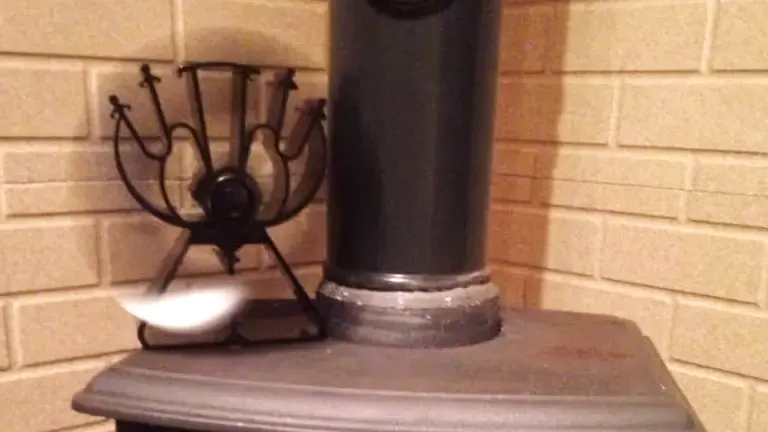
The heart of the Voda’s functionality lies in the Peltier module. This solid-state device works on the principle of thermoelectric cooling, a process where the difference in temperature between two different types of semiconductors generates a voltage. In the context of the stove fan, the base heats up from the stove’s warmth while the top remains cooler, creating a temperature differential. This differential, harnessed by the Peltier module, generates electricity that powers the fan’s motor, causing the blades to spin. The beauty of this system is its self-sufficiency: no batteries, no external power sources, just smart application of science.
Performance
The true prowess of the Voda becomes apparent once it gets going. Those four blades aren’t just for show. With the ability to circulate approximately 190 CFM, it effectively bridges the gap between power and efficiency. The resultant airflow not only ensures a faster spread of warmth but also covers a larger radius. This is particularly advantageous in open-concept homes or larger rooms where even heat distribution can be a challenge. The experience is amplified by its silent operation, making its presence felt in warmth rather than noise.
3. Valiant FIR300 Eco-Fan
Specifications
- Operating temperature range: 122°F to 572°F (50°C to 300°C)
- Dimensions: 3.5″L x 3.5″W x 6.5″H (8.9cm x 8.9cm x 16.5cm)
- Weight: 7.4 ounces (0.2 kg)
Upon unboxing the Valiant FIR300, what strikes immediately is its compact design. It doesn’t dominate the stove top but rather nestles atop it, seamlessly integrating into its surroundings. Its lightweight nature makes it incredibly user-friendly, particularly for those who frequently reposition their heating setups or perhaps use it across multiple stoves in different rooms. The minimalist design suggests a focus on function, yet it carries an understated elegance that doesn’t compromise on aesthetics.

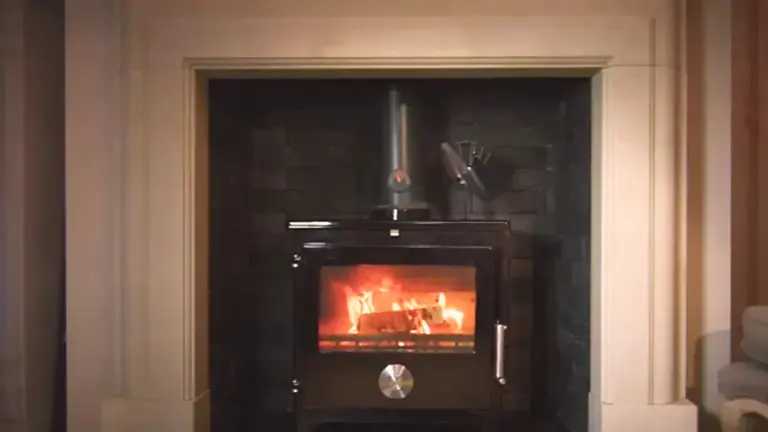
The core operational principle of the Valiant FIR300 is rooted in thermoelectric technology, a fascinating area of physics where heat is directly converted into electricity. This is achieved through the Seebeck effect, where a voltage is generated when different temperatures are applied to two sides of a material. As the base of the fan heats up from the stove’s warmth, a temperature difference is established between the base and the top. This differential is then harnessed to generate electricity, which, in turn, powers the fan blades, eliminating the need for batteries or external power sources. It’s clean, efficient, and a brilliant adaptation of science for home use.
Performance
What the Valiant FIR300 lacks in size, it compensates for in performance. With the capability to move about 160 CFM of air, it punches well above its weight. This ensures a quick and even distribution of warmth, transforming cold, unwelcoming spaces into cozy sanctuaries in minutes. Its efficiency is particularly pronounced in smaller rooms or areas, where it rapidly eliminates cold spots and delivers consistent heating. And, like the best of its kind, it achieves this with a whisper-quiet operation, making its presence known through comfort rather than sound.
4. Home-Complete Stove Fan
Specifications
- Operating temperature range: 158°F to 572°F (70°C to 300°C)
- Dimensions: 4.3″L x 3.9″W x 6.3″H (11.0cm x 9.9cm x 16.0cm)
- Weight: 8.8 ounces (0.2 kg)
When you first lay eyes on the Home-Complete Stove Fan, it feels like a journey back in time. It’s reminiscent of a bygone era, where wood stoves were central to homes and stories were shared around their warmth. Its design is a beautiful amalgamation of old-world charm combined with the sleekness of modern-day functionality. This isn’t just a tool; it’s a piece that adds character to a room.
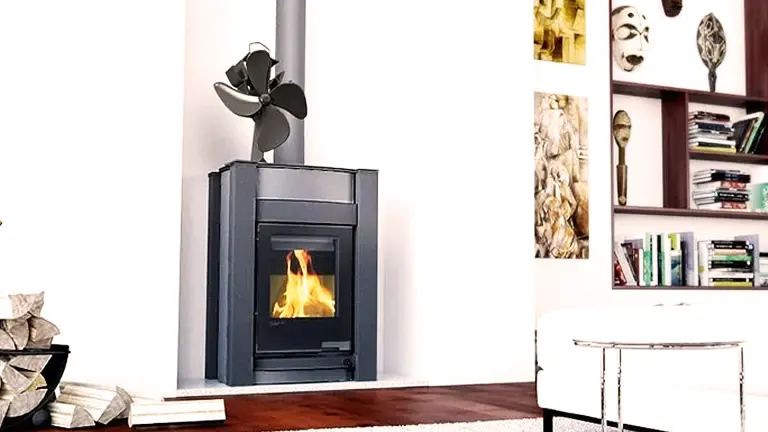
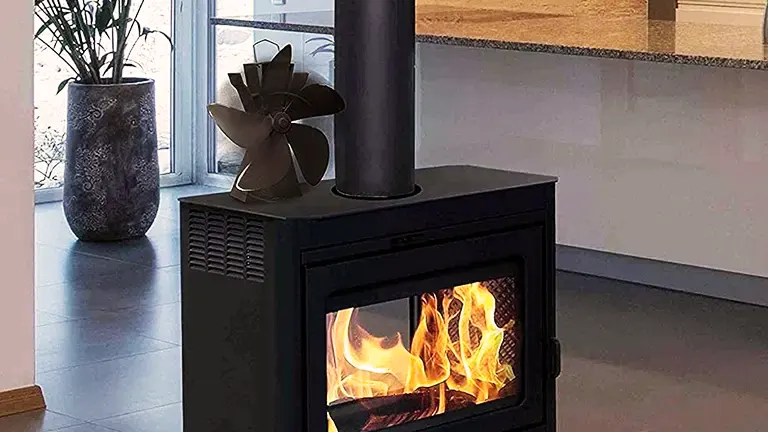
The operational mechanism of the Home-Complete fan is rooted in the principle of heat differential. As the base of the fan absorbs heat from the stove, a temperature gradient is established between the warmer base and the cooler top. This difference in temperature sets the fan into motion. As the stove gets hotter, the speed of the blades increases, dispersing the rising warm air across the room. It’s a self-regulating system, entirely powered by the stove’s heat, thus obviating the need for external energy sources or batteries.
Performance
The Home-Complete Stove Fan is like the tortoise in the classic fable – it might not be the fastest off the block, but it offers a consistency that’s unmatched. Pushing air at a rate of about 150 CFM, it steadily ensures that warmth is evenly distributed throughout the room. It might take a tad longer to heat larger spaces fully, but once it gets going, the consistent airflow ensures there are no cold pockets left. In essence, what it might lack in sheer speed, it makes up for in its steadfast performance.
5. My 5 Blade Wood Stove Fan
Specifications
- Operating temperature range: 122°F to 572°F (50°C to 300°C)
- Dimensions: 4.1″L x 3.9″W x 6.3″H (10.4cm x 9.9cm x 16.0cm)
- Weight: 8.8 ounces (0.2 kg)
One glance at this fan, and it’s evident that it means business. The five blades aren’t a mere design aesthetic. Instead, they’re a clear declaration of power and efficiency. They command attention, creating an anticipation of the performance they’re poised to deliver. It speaks of sophistication and functionality rolled into one, making you eager to put it to the test.

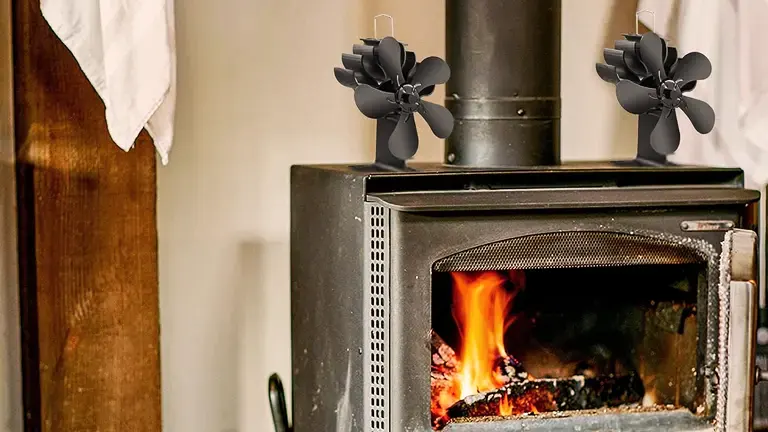
The underlying principle of the fan’s operation is both ingenious and environmentally friendly. As the stove radiates heat, the base of the fan absorbs it. This absorbed heat, in turn, is converted into kinetic energy through a thermoelectric process. This kinetic energy sets the five blades in motion, allowing them to circulate the warm air throughout the space. The beauty of this system is its simplicity and self-sufficiency. No batteries, no cords, just a seamless transformation of heat into motion.
Performance
And when it comes to delivery, the My 5 Blade Wood Stove Fan doesn’t hold back. With an impressive airflow rate of up to 210 CFM, its prowess becomes palpable almost instantly. The blades work in tandem, creating a vortex of warm air that doesn’t just spread horizontally but also rises, ensuring multi-level warmth. So whether you’re curled up right next to the stove, or a floor above, the comforting embrace of warmth is unmistakable. The speed and efficiency with which it operates are bound to surprise even the most skeptical homeowner.
Comparison Table
| Product Name | Number of Blades | Heat Source | Airflow Capacity | Special Features |
|---|---|---|---|---|
| Ecofan Airmax | 2 | Wood Stove | Varies (CFM Rating) | Self-powered by heat |
| Voda 4-Blade Heat-Powered Stove Fan | 4 | Wood Stove | 150-190 CFM | Silent operation |
| Valiant FIR300 Eco-Fan | 4 | Wood Stove | 180-190 CFM | Eco-friendly design |
| Home-Complete Stove Fan | 4 | Wood Stove | 130-150 CFM | Built-in thermometers |
| My 5 Blade Wood Stove Fan | 5 | Wood Stove | Varies (CFM Rating) | Efficient 5-blade design |
In Conclusion
Navigating the myriad options in wood stove fans is akin to striking the right chord between functionality, design, and individual requirements. My journey spotlighted two particular gems: the Ecofan Airmax, with its sleek design seamlessly married to efficiency, and the My 5 Blade Wood Stove Fan, a testament to power and reach. However, it’s important to emphasize that every fan discussed here carries its distinct merits. From the space efficiency of Valiant FIR300, and the vintage appeal of the Home-Complete, to the expansive warmth distribution of the Voda 4-Blade – each holds a special place in the grand tapestry of wood stove heating solutions.
In the final analysis, while personal preferences and needs play a pivotal role in the selection process, the options listed here ensure that regardless of the choice, winter’s chill will be kept at bay, replaced by a warm and comforting embrace.
Related Articles:
- Black Friday Wood Stove Fan Deals 2023
- Steelhead Stirling Engine Stove Fan: Must Have Accessory
- 10 Best Wood Stove Fans 2023
Frequently Asked Question
- 1Why does a wood stove fan have no cords or batteries?
Most wood stove fans operate using thermoelectric power, meaning they convert the stove‘s heat into electricity, allowing them to run without external power sources. - Can I use the fan on other heat sources, like a gas stove?
While primarily designed for wood stoves, some fans might work on gas stoves, provided the surface temperature is within the operational range of the fan. - Does the fan blow hot air or just circulate existing air?
The fan helps distribute the hot air generated by the stove more evenly throughout the room, ensuring no cold pockets. - How do I know if my stove is too hot for the fan?
Many wood stove fans have built-in bi-metallic safety devices that lift the fan’s base off the stove when it reaches a certain temperature, preventing overheating. - Why is the material of the fan important?
Materials like anodized aluminum are heat-resistant and ensure longevity, given the direct exposure to high stove temperatures. - Will the fan operate immediately when I light the stove?
Most fans require the stove to reach a certain temperature before they start operating, ensuring they have enough heat to generate power. - Can I leave my wood stove fan on the stove overnight?
Yes, most fans can be left on the stove as they operate based on the stove’s heat. As the stove cools, the fan will naturally slow down and stop. - Does the size of the fan blades affect its performance?
Larger blades can move more air, but the number of blades and their angle also play a significant role in the fan’s effectiveness in circulating air. - How do I maintain and clean my wood stove fan?
Regularly dusting the blades and ensuring it’s free from soot buildup will help maintain its performance. Avoid immersing it in water or using wet cloths. - Is there an optimal position on the stove for the fan?
It’s usually best to position the fan at the back of the stove, near the flue pipe, but not directly next to it. This allows the fan to catch the most heat and distribute it effectively.
We’re eager to know your thoughts! Feel free to share your personal experiences and opinions about the Best Wood Stove Fan on Amazon 2025 in the comments below. Your feedback could be invaluable for other shoppers, aiding them in making well-informed choices!

David Murray
Forestry AuthorI'm David Murry, a forestry equipment specialist with a focus on chainsaw operation. With over 13 years of experience, I've honed my skills in operating and maintaining a wide range of machinery, from chainsaws to log splitters. My passion for the outdoors and commitment to sustainable forestry drive my work, which emphasizes safety, efficiency, and staying updated with industry advancements. Additionally, I'm dedicated to sharing my expertise and promoting environmental awareness within the forestry community.

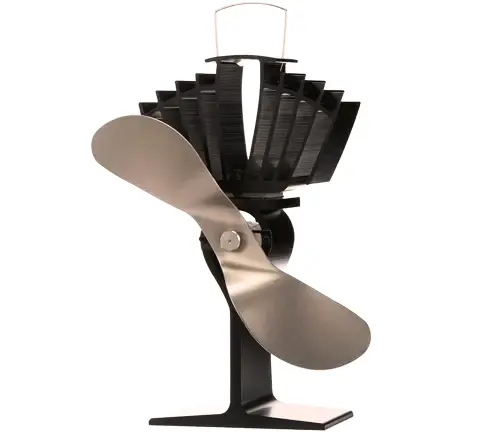

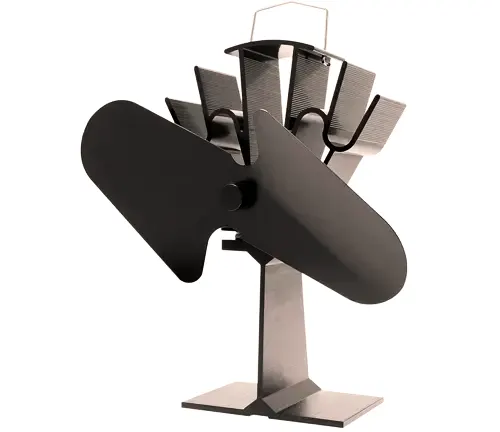
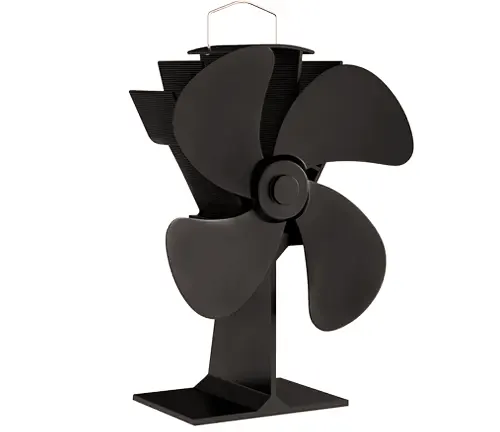
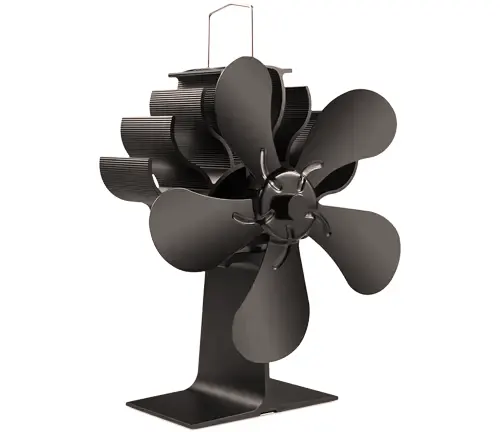








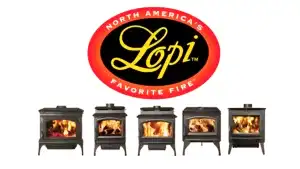



Leave your comment